With airline industry leaders retiring aging fleets in favor of newer, more efficient aircraft, pressure is mounting on Alaska Airlines to reconsider its Hawaii fleet strategy. Alaska has been riding a wave of strategic and financial success, including nearly a 50% surge in its stock over the past year, giving the airline a strong financial position for potential fleet upgrades.
As one of the industry’s most “fleet-savvy” players, Alaska is well-positioned. When it chooses, it can adapt quickly and align its Hawaii routes with the shift toward modern, fuel-efficient planes. However, despite its strong standing, Alaska has indicated no immediate plans to replace its 717 fleet, which has long served in Hawaii.
This cautious approach has sparked questions about whether Alaska will seize this moment to modernize or continue relying on a fleet that has defined Hawaii service for 25 years. With a reputation for innovation, one might expect Alaska to lead on this issue—but the airline’s current stance suggests it could risk falling behind in the industry’s fleet modernization trend.
End of an era: industry leaders modernize, but Alaska’s path may differ.
As airline industry leaders like Qantas and Delta retire their Boeing 717 fleets in favor of the Airbus A220, the shift signals a broader trend toward newer, more efficient aircraft. Qantas recently completed its final 717 flight, pivoting to the A220 as a solution with greater range, passenger comfort and capacity, and fuel efficiency. Delta, the largest operator of 717s, is on track to retire its entire fleet of these aircraft within the next year, also transitioning to the A220.
While the A220 has become a popular choice for some carriers, Alaska Airlines appears to be on a different trajectory. Rather than joining the A220 trend, Alaska may show a preference for maximizing its existing fleet of Boeing 737s and Embraer E175s, particularly on routes to and within Hawaii. As we covered in Alaska’s Vision for Hawaii Air Travel, the E175, a regional jet with a strong track record, offers a flexible, efficient and familiar option for shorter routes, complementing the larger 737s that Alaska operates on higher-capacity Hawaii routes.
This approach is strategic for Alaska. The E175 and 737 combination would allow the airline to tailor capacity to demand, balancing operational costs and passenger volume on each route. Alaska’s reliance on these familiar models may also reflect the airline’s current fleet strategy, which prioritizes adaptability and cost efficiency instead of a complete shift to new aircraft types such as the A220.
For Hawaii travelers, Alaska’s commitment to the E175 and 737 could mean reliance on aircraft familiar to the airline, even as much of the industry adopts to different models. But with competitors embracing fleet modernization, the larger question remains whether Alaska’s current wait and see approach will keep pace with evolving traveler expectations and industry standards for modernity, efficiency and comfort.
The stakes for Alaska Airlines: pressure to adapt.
With the Boeing 717 reaching retirement across its last major airline operators, Alaska faces increasing pressure to modernize its newly acquired Hawaii fleet, to a higher standard of comfort, reliability, and environmental efficiency. Alaska’s decision to hold onto its aging fleet may risk falling short of these rising expectations, particularly as competitors set a new aircraft bar.
Alaska’s Embraer E175, with its 2-2 economy seating, does provide a notable comfort advantage by eliminating middle seats entirely, a detail likely to appeal to Hawaii travelers, as you have noted in comments. On the other hand, the 737 fleet is an entirely 3-3 seating environment. For many, the E175 setup can make a big difference on shorter flights, as it adds to the overall comfort of the journey.
What Hawaii travelers could gain from an upgrade.
For Hawaii travelers, an Alaska Airlines fleet upgrade could mean more than just newer aircraft. With a potential focus on a dual-aircraft interisland fleet of Embraer E175 and Boeing 737, Alaska has an opportunity to elevate comfort and efficiency in Hawaii without adopting entirely new models.
Using its E175 fleet for lower-demand routes and the 737 for higher-capacity flights would allow Alaska to better align aircraft with specific route demands, optimizing both comfort and operational efficiency. Enhancements to cabin features, including noise reduction, would also contribute to a more enjoyable passenger experience.
As the industry evolves, Alaska’s potential fleet upgrades could position the airline to meet these standards effectively on all its Hawaii routes.
Will Alaska Airlines follow others’ lead?
As the countdown begins for the final Boeing 717’s retirement, all eyes are on Alaska Airlines. The recent fleet decisions by other major airlines signal a clear industry trend. Should Alaska choose a similar path, it could demonstrate a renewed commitment to providing travelers with an updated experience that aligns with traveler expectations.
Ultimately, Alaska’s fleet strategy may play a pivotal role in shaping the future of Hawaii air travel, offering a more comfortable and enjoyable experience for residents and the islands’ ten million annual visitors. The question remains: how will Alaska respond to the pressure and adapt its Hawaii fleet?
Get Breaking Hawaii Travel News
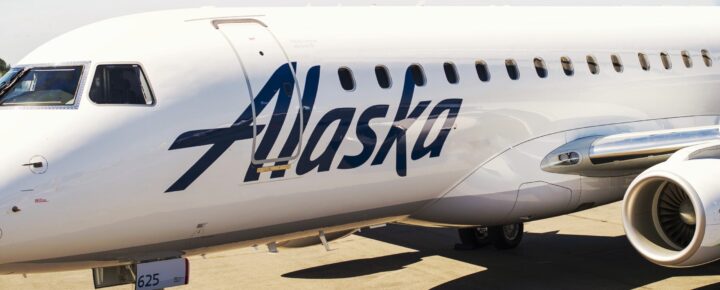
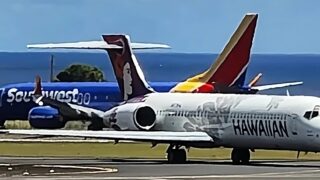
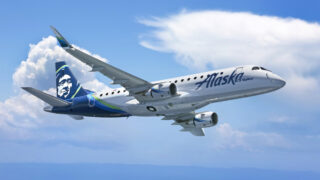
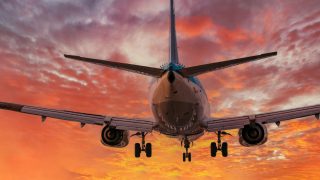

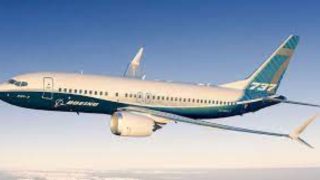
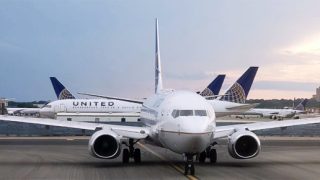
Do you have a source for your statement that DAL will retire all of it’s 717s within a year?
Wouldn’t the E195-2 be the proper size for size replacement for 717
I’m glad that Alaska is not rushing in to make a hasty decision on something so critical to our lives in Hawaii. As I recall, Mokulele Airlines had flown an Embraer for a short time and they had a hard time accommodating a full load of luggage and passengers. They ended up burdening the other carriers to take some of their luggage. Hawaiian runs a cargo operation that capitalizes on the excess capacity of the 717. A wrong decision on type of aircraft could jeopardize both operations.
With the acquisition of Hawaiian Arline’s, Alaska can continue operating the A320 and A330 as well as the new 787 for longer destinations.
Does Alaska plan on flying to more Asian destinations from Honolulu?
The reporting on Qantas retiring the Boeing 717 for the A220 is spot on since they recently retired their last 717 a few days ago. However Delta reversed their decision to retire the 717 for now and has pretty much reactivated most of the jets that were parked during the pandemic.
While the E175 RJ is a good plane, it would be a down grade from the 717 as far as the big jet feel and capacity. The if Hawaiian was to eventually replace the 717 in the future, the A220 would be better option especially for its longer range, fuel efficiency, and comfort. Especially reducing the need for gate checked bags compared to the 717 and the smaller E175.
I would love to see the A220, but knowing Alaska, I don’t foresee it happening. The best airframe for inter island flying would be the E175. It’s comfortable, safe and efficient for this type of flying.
The A220 is unfortunately too expensive to deploy in super short legs, like island to island travel. It also is not Pacific ETOPS certified for over water flying at the range it would need to reach the west coast of the USA. The move to a 737/E175 fleet would make much more sense. It would provide operational flexibility and greater value to travelers that need to control costs when they move from island to island. The Hawaiian/Alaska merger will create a lot of change over the next few years. Some positive, some not. But in the long run, I think this will be very good for the Hawaiian travel system and community.
The A220 could get certified for ETOPS if Alaska/Hawaiian wanted it should that be a route they choose.
While I am not familiar with the newer aircraft, I am familiar with the md 95/ 717 and trust them to run for 50 years
Aloha,
The A220 is a great contender for Neighbor Island operations:
Range + ETOPS – small enough for smaller airports/newer markets to fly to Hawaii from the West Coast.
Cargo Capacity (important for surfboards and bikes!)
Revenue Seat Miles: A220 has capacity for up to 160 seats whereas E175 only has capacity for up to 78.
An earlier comment that engine reliability was an issue. Those same PW engines on the A220 power Hawaiian A321neos and the issues have been largely fixed. If chosen as a replacement, the A220 would probably not even be intro’d into (Alaska)Hawaiian’s fleet until about 2030.
So what if Alaska needs to get new simulators/training facilities? If Alaska wants to grow beyond its current size and take on the Big 4 it’s gonna need to spread its wingspan even further.
A major question is whether or not Alaska can afford to retire the 717’s after acquiring Hawaiian. Would the E175 be available for Los Angeles to Lihue? I like the idea of more room with the 2 seats instead of 3. I am concerned about the value of the Hawaiian miles becoming devalued when the merger overhaul becomes complete next year. Just received a Alaska credit card invitation. Not sure if I will be approved since my Hawaiian card is maxed out. Hopefully I can use up my miles and get a few low cost trips on my miles before they get changed. Mahalo for your great updates. Keep them coming please. Aloha
The E175 would not be used for ETOPS flight (LAX-LIH). Rather it would be used for inter island flying
Don’t really think Alaska will ever fall into the A220 series engine problem senerios. Lack of replacement parts and horrific wait times. Nobody wants to fly over the pacific with a carrier with failing engine problems. If it comes to safety over comfort I will pick safety and reliability with no questions asked. Comfort don’t do you any good if the flight ends up short.
I think the E175 is a good replacement for 717. Being there is such high frequency between islands, it would be a relatively cheap replacement. Maybe for the really busy routes like HNL-KOA a 737 would be a good supplement to the Embraer.
Hawaii, you need to get a clue. You are far outside major travel routes — not even close. Hawaii is not — not — a layover or refueling destination, nor does Hawaii have any industry. None. Zero.
U.S. Mainland routes and airports are orders of magnitude busier than Honolulu and Kahului. Hawaii airports and routes don’t even crack the top 30 in terms of United States air traffic. Internationally, Hawaii airports aren’t even in the top 100. I bet Heathrow gets more passengers in one month than Honolulu gets all year. DFW, Chicago, JFK, LAX blow away all Hawaii airports in terms of flights, passengers, and revenue.
Hawaiian Airlines twice filed for bankruptcy. It was close to a third filing. And major carriers have been cutting capacity. If you think this merits a fleet wide upgrade to ultra-expensive jetliners, you fail at basic economics — and greatly overestimate your importance.
There is almost zero chance the E175 comes to intra island routes as the ALPA will make sure that any new CBA maintains that the mainline intra island provision. Alaska also needs to replace 11 737-700 aircraft on the mainland. There are probably 3 mainline options.
1) 737 MAX7- Not the most like option, the plane is not certified and Southwest has most of the production slots locked up. You might see some MAX8 or 9s used to boost capacity on certain routes.
2) A220- Definitely a contender with the right number of seats to replace both types. It also has ETOPS 180 rating which could be used to open up smaller western US markets. Downside, it would be a new type for AS.
3) E2 195/0 Definitely a contender with the right number of seats to replace both types. It would have some commonality with the E175, a aircraft that Alaska has familiarity with. Downside, it is not ETOPS180 certified yet so it could not open up smaller western US markets.
Un-said in this discussion of future Alaska Airlines plane types is the fact that Alaska already flies a fleet of E175s and already deploys them on shorter-range routes—-all under subsidiary Horizon Air (though the E175s are dual-branded with a large “Alaska” logo and much smaller “Horizon” logo). The E175s are deployed when projected load factors make sense: Example-When I fly ANC-OME on a heavy passenger/mail/cargo day, I’m on a 737-800; if its a “lighter” day, I’m on an E175. Jim E
Set up a whole new maintence facility and training for the A220?
I don’t think so.
Sooner or later, Alaska will retire the 717’s and do what Southwest does: rotate their 737’s interisland and back to the mainland,